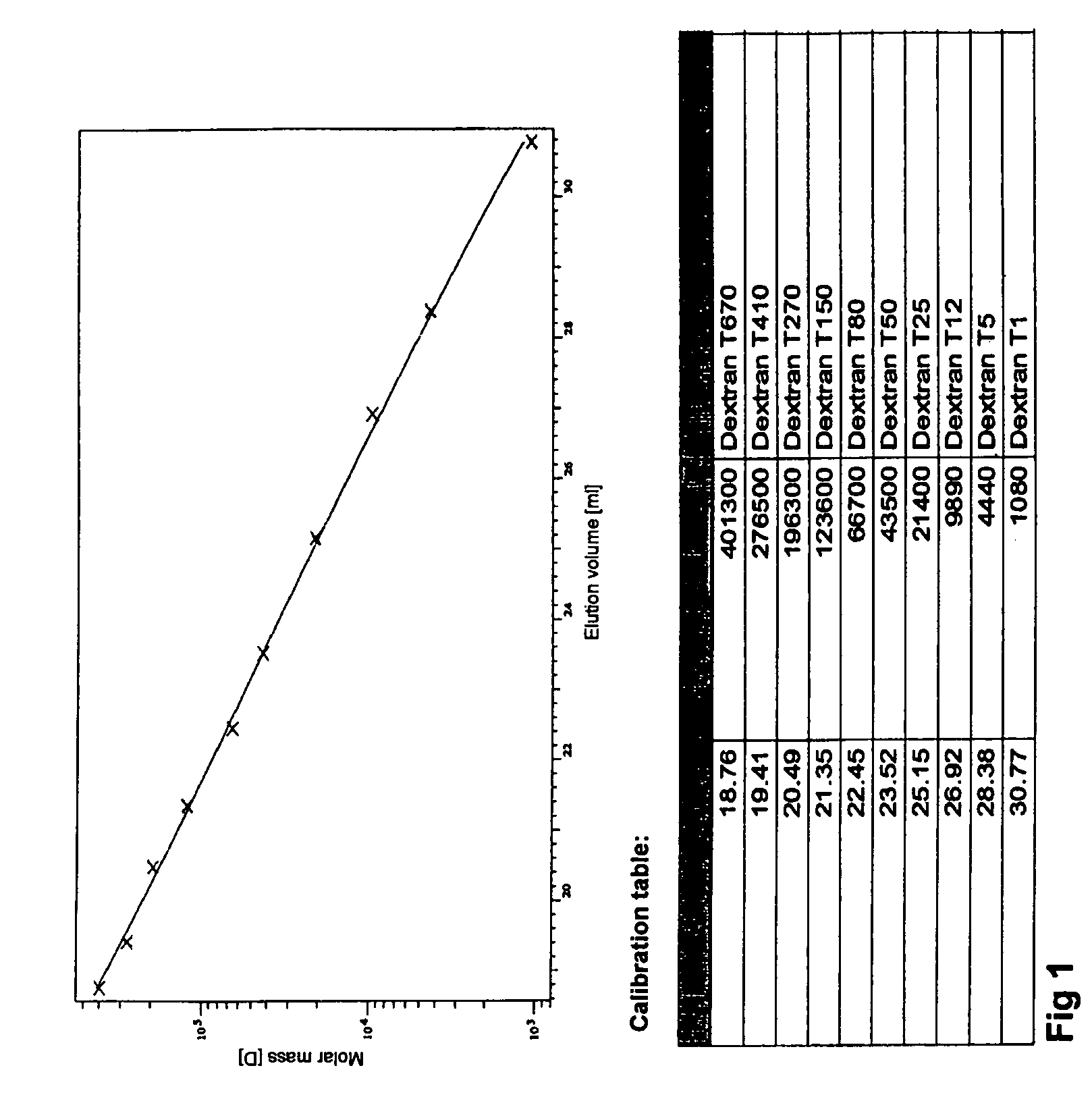High-phosphate starch
a high-phosphate starch and starch technology, applied in the field of modified starches, can solve the problem of not being able to detect starch phosphate in oats, and achieve the effect of reducing activity
- Summary
- Abstract
- Description
- Claims
- Application Information
AI Technical Summary
Benefits of technology
Problems solved by technology
Method used
Image
Examples
examples
1. Preparing the Expression Vector ME5 / 6
[0231]pGSV71 is a derivative of the plasmid pGSV7, which is derived from the intermediary vector pGSV1. pGSV1 is a derivative of pGSC1700, whose construction was described by Cornelissen and Vanderwiele (Nucleic Acid Research 17, (1989), 19-25). pGSV1 was obtained from pGSC1700 by deleting the carbenicillin resistance gene and deleting the T-DNA sequences of the TL-DNA region of the plasmid pTiB6S3.
[0232]pGSV7 contains the origin of replication of the plasmid pBR322 (Bolivar et al., Gene 2, (1977), 95-113) and also the origin of replication of the pseudomonas plasmid pVS1 (Itoh et al., Plasmid 11, (1984), 206). pGSV7 also contains the selectable marker gene aadA from the Klebsiella pneumoniae transposon Tn1331, which mediates resistance to the antibiotics spectinomycin and streptomycin (Tolmasky, Plasmid 24 (3), (1990), 218-226; Tolmasky and Crosa, Plasmid 29(1), (1993), 31-40). Plasmid pGSV71 was obtained by cloning a chimeric bar gene betwee...
PUM
| Property | Measurement | Unit |
|---|---|---|
| Fraction | aaaaa | aaaaa |
| Fraction | aaaaa | aaaaa |
| Fraction | aaaaa | aaaaa |
Abstract
Description
Claims
Application Information
 Login to view more
Login to view more - R&D Engineer
- R&D Manager
- IP Professional
- Industry Leading Data Capabilities
- Powerful AI technology
- Patent DNA Extraction
Browse by: Latest US Patents, China's latest patents, Technical Efficacy Thesaurus, Application Domain, Technology Topic.
© 2024 PatSnap. All rights reserved.Legal|Privacy policy|Modern Slavery Act Transparency Statement|Sitemap


